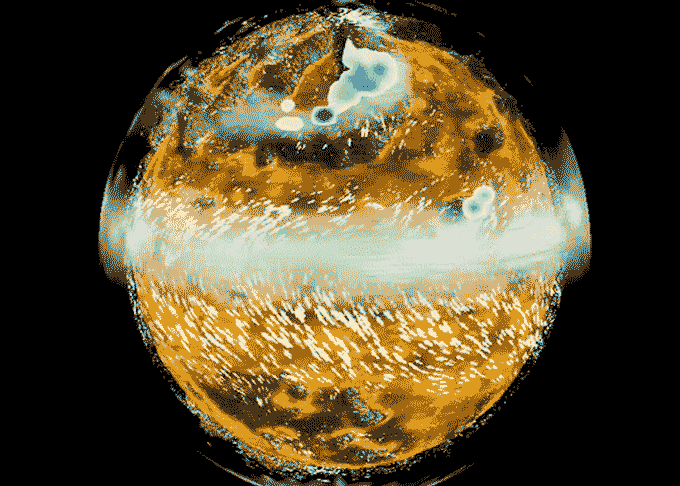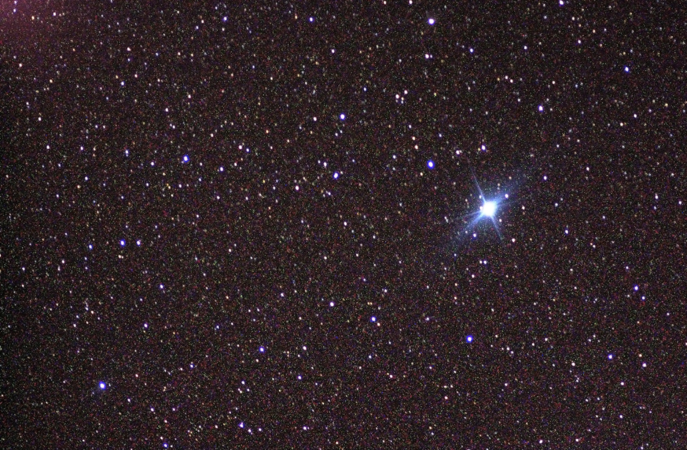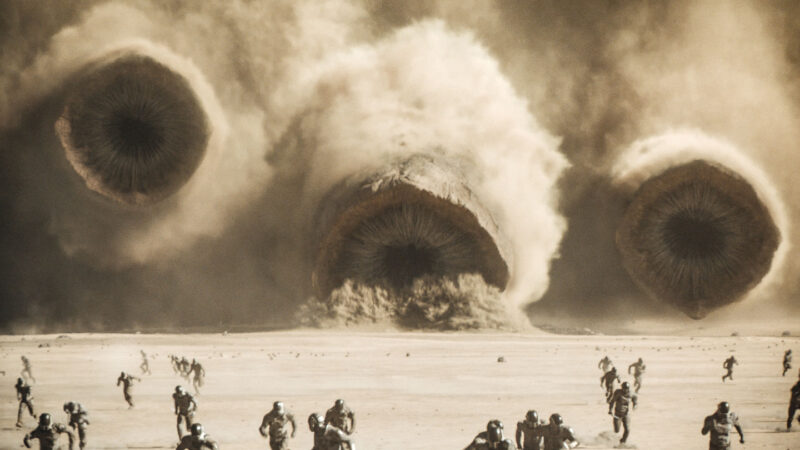The desert planet in ‘Dune’ is pretty realistic, scientists say
The giant sandworms that live on the fictional planet, though, probably could not exist

A computer model suggests that humans — but probably not giant sandworms — could survive on Dune’s desert planet Arrakis.
Niko Tavernise/Courtesy of Warner Bros. Pictures
In March, the film Dune: Part Two returned sci-fi fans to the desert planet Arrakis. On this harsh, sandy world, human settlers seek “the spice” — a substance that enables interstellar travel. But spice miners must evade giant, man-eating sandworms.
This fantastical setting has captured Dune fans’ imaginations for decades. Frank Herbert first introduced Arrakis in the novel Dune in 1965. The new movies, based on the book and directed by Denis Villeneuve, have brought Herbert’s rich worldbuilding to new life. And now, scientists have weighed in on how realistic the world of Arrakis really is.
People probably could live on a planet like Arrakis, researchers say. But monstrous sandworms (thankfully) could not.
Habitable? Yes. Pleasant? Eh…
A few years ago, a team of climate modelers made a computer simulation of Arrakis. (You can explore the virtual planet at Climate Archive). To create their model, the researchers started with the physics known to drive weather and climate on Earth. Then, they added details about the planet from the Dune novel and its sequels. The modelers also drew information from the Dune Encyclopedia.
According to that intel, Arrakis’ atmosphere is similar to Earth’s — with a couple of key differences. Arrakis has less carbon dioxide, or CO2, in its atmosphere. But the fictional world also has far more ozone in its lower atmosphere. Ozone makes up some 0.5 percent of the gases in Arrakis’ lower atmosphere. But it’s only about 0.000001 percent of Earth’s lower atmosphere.
All that extra ozone is crucial for understanding Arrakis. Ozone is a powerful greenhouse gas. It’s about 65 times as potent at warming the atmosphere as CO2 is over a 20-year period.
“Arrakis would certainly have a much warmer atmosphere, even though it has less CO2 than Earth today,” says Alexander Farnsworth. He’s part of the team that built the model Arrakis. He works at the University of Bristol in England.

So much ozone in the lower atmosphere could be bad news for humans. “That would be incredibly toxic, I think,” Farnsworth says. “Almost fatal, if you were to live under such conditions.” People on Arrakis would likely have to use some technology to remove ozone from the air.
People would also need to be careful about where they established settlements on Arrakis. In the Dune universe, people live near the poles. But in reality, these areas would have extreme summer heat and bone-chilling winter cold. For instance, winter could bring temperatures as low as −40° C to −75° C (−40° F to −103° F). This would make polar regions nearly unlivable without technology, Farnsworth says.
Temperatures near Arrakis’ equator would be milder. Say, around 45° C (113° F) in the warmest months and about 15° C (59° F) in colder ones.
On Earth, high humidity causes tropical areas near the equator to be far warmer than at the poles. But this was not the case in the computer model of Arrakis. “Most of the atmospheric moisture was essentially removed from the tropics,” Farnsworth says. This made even the scorching summers more bearable. The clouds and tiny amount of moisture gathered near the poles to heat the atmosphere.
But the tropics on Arrakis would pose their own challenges. Hurricane-force winds would regularly sandblast settlers and build dunes up to 250 meters (820 feet) tall.
That doesn’t mean people couldn’t live on Arrakis, Farnsworth says. They’d just need technology and lots of off-world support to bring in food and water. “It’s a very livable world,” he says. “Just a very inhospitable world.”

It’s hard to be a giant sandworm
Humans might be able to get by on Arrakis with some help from their tech. But the planet would likely not be livable for its most famous residents: the giant sandworms.
The sandworms on Arrakis are said to be up to 400 meters (1,300 feet) long. That’s nearly 10 times the length of the biggest dinosaurs that ever lived. That would be unusual for an animal with a long body, like a worm.
“The worm body plan is really common. It has evolved many times over the last 600 million years,” says Patrick Lewis. “But none of them have ever been very big.” Lewis is a vertebrate paleontologist. He works at Sam Houston State University in Huntsville, Texas.
For invertebrate worms — those without spines — the problem is oxygen. Worms often absorb oxygen through their skin to spread through their bodies. The larger the animal, the harder it would be to get oxygen to their internal organs.
Lewis figures that Arrakis’ giant sandworms must be vertebrates, though. We have vertebrate worm-like creatures on Earth, like Zygaspis worm lizards from sub-Saharan Africa. Those are the species that Lewis studies. They are much smaller than Arrakis’ worms. They’re only about 20 to 30 centimeters (8 to 12 inches) long. But that didn’t stop Lewis from imagining what a Dune-sized vertebrate worm might be like.

Worms with bones and muscles could be bigger and stronger than invertebrates, Lewis says. But they would be limited by gravity. Whales can be big because they live in water. There, buoyancy can do a lot of the heavy lifting on their bodies.
“But if you’re going to be on the surface, then you have to be able to fight gravity,” Lewis says. To reach more than 150 meters long, “you would basically have to be a big ball of bone to keep from crushing under your own weight.”
Perhaps Arrakis’ worms would have bones made of a superlight material not known on Earth. Then, they could grow to such a huge size. But that poses a problem for moving around. “The bigger you get, the relatively weaker the muscles are,” Lewis says. “So you’d need monstrously strong muscles” and “unbelievably thick bones” to attach them to. And muscles create a lot of heat.
Zygaspis worm lizards can tolerate 45° C (113° F) temperatures in Africa’s Kalahari Desert. That’s because they are small. This means their bodies have lots of surface area compared to their volume. The more surface area relative to volume an animal has, the more easily it can shed heat.
A giant sandworm wouldn’t be able to shed heat nearly as easily. The bigger an animal is, the more volume it has — which generates and stores heat — compared to the surface area it uses to cool itself. Combine that with the hot weather of Arrakis, and that spells trouble for huge worms.
“If you’re a giant worm, a hot climate is not your friend,” Lewis says.
So if you’re a Dune fan wondering what life would truly be like on Arrakis, you’re in luck. The planet would be a realistic, if harsh, place for humans to live. As a bonus, you probably wouldn’t have to worry about getting eaten by a giant sandworm.







